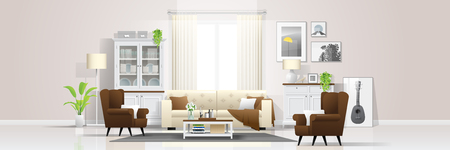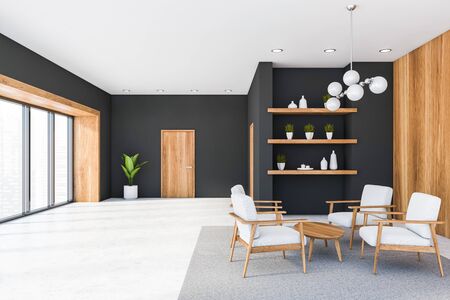1. Understanding the UK Interior Design Landscape
The world of interior design in the UK is as varied and vibrant as its patchwork countryside. British homes have long reflected a unique blend of heritage and innovation, where stately Georgian townhouses stand alongside sleek new-build apartments. This diversity extends into the realm of interior design services, shaping both high-end and affordable offerings across the country. Traditional British influences—think herringbone floors, crown moulding, and period fireplaces—sit comfortably next to minimalist city lofts with exposed brick and industrial accents. Regional differences also play a significant role; a home in Edinburgh’s historic New Town may call for refined classic touches, while a Manchester flat might lean into bold colours and contemporary furnishings inspired by urban living. This rich tapestry means that both luxury and budget-friendly designers must adapt their approaches, balancing timeless British style with the demands of modern life. Whether you’re seeking grandeur or practicality, understanding the local context is key to finding an interior design service that feels truly at home in the UK.
What Defines High-End Interior Design in the UK
When we talk about high-end interior design in the UK, there’s an unmistakable sense of refined luxury and understated elegance that immediately sets it apart. The essence of British high-end interiors lies not just in aesthetics, but in the thoughtful layering of history, bespoke elements, and a deep respect for craftsmanship. Let’s explore what truly defines these premium services.
Bespoke Features: Tailored to Perfection
At the heart of luxury British interiors is the art of bespoke design. Unlike standard offerings, everything from cabinetry to upholstery can be custom-made to fit unique spaces and personal tastes. This approach ensures that no two homes look alike – every detail is tailored, reflecting the homeowner’s lifestyle and preferences with precision. Whether it’s a hand-carved oak staircase or fitted wardrobes designed to maximise awkward alcoves, bespoke features are a hallmark of exclusivity.
Artisan Craftsmanship: Celebrating Skill and Heritage
High-end design services in the UK put a spotlight on artisan craftsmanship. Skilled tradespeople—be they carpenters, upholsterers, or decorative artists—often use time-honoured techniques passed down through generations. This results in pieces that aren’t just beautiful, but also built to last, carrying a sense of heritage within their joinery and finishes. The attention to detail is palpable: think hand-stitched leather, intricate marquetry, or individually cast brass handles.
Prestigious Materials: A Commitment to Quality
The choice of materials sets luxury interiors apart from more affordable options. High-end designers source only the finest—solid hardwoods like walnut or oak, natural stones such as marble or slate, and sumptuous textiles including British wool or silk velvet. These materials not only elevate the visual appeal but add tactile richness and longevity to every space.
| Aspect | High-End Interior Design | Affordable Interior Design |
|---|---|---|
| Bespoke Features | Fully customised solutions; made-to-measure furnishings | Mainly off-the-shelf furniture; limited customisation |
| Craftsmanship | Artisan-made; traditional techniques | Factory-made; mass production methods |
| Materials | Premium woods, stone, fine fabrics | Synthetic materials; budget-friendly options |
| Brands & Designers | Iconic British names; design houses with legacy | High street brands; generic design studios |
The Role of Iconic British Brands and Designers
No discussion on high-end UK interiors would be complete without mentioning iconic British brands and designers. Names like David Linley, Cole & Son, and Liberty London evoke a sense of heritage and innovation that resonates globally. Collaborating with such brands ensures access to exclusive collections and signature styles—whether it’s wallpaper with a storied motif or bespoke lighting crafted by a renowned studio.
The Takeaway: More Than Just Appearance
In sum, high-end interior design in the UK is defined by its commitment to individuality, craftsmanship, and quality materials—all woven together by the influence of celebrated British makers. It’s about creating spaces that not only look exquisite but feel deeply personal and enduring—a true investment in both home and lifestyle.

3. The Essentials of Affordable Interior Design Services
When it comes to affordable interior design services in the UK, practicality and value take centre stage. Unlike high-end projects, budget-conscious design is about making the most out of what you have, while still achieving a look that feels fresh, inviting, and uniquely yours. One of the hallmarks of this approach is the clever use of off-the-shelf furnishings from popular British retailers such as IKEA, Dunelm, or Habitat. These ready-made solutions are not only cost-effective but also offer a wide variety of styles suited to the diverse tastes found across UK households.
A key aspect of affordable design is prioritising essential updates that deliver the greatest impact—think a splash of paint in a trending shade, swapping outdated handles for modern hardware, or adding layered lighting with budget-friendly lamps from high street shops. Rather than custom-built cabinetry or bespoke upholstery, the focus is on mixing and matching accessible pieces that maximise space and function, which resonates particularly well with those living in compact city flats or traditional terraced houses.
Project management within affordable interior design also tends to be streamlined. Many designers offer fixed-fee packages or clear hourly rates, ensuring clients have control over their spending from the outset. Open communication and transparent timelines help homeowners feel empowered throughout the process, reducing stress and preventing any nasty surprises. In essence, affordable design is about smart choices—balancing aspirations with realistic solutions, all while embracing the character and quirks that make British homes so charming.
4. Service Experience: Personal Touch vs Practical Approach
When it comes to interior design services in the UK, the service experience can differ significantly between high-end and affordable options. British homeowners often have distinct expectations based on both tradition and practicality, which are reflected in how these services are delivered. Let’s explore how a personalised, hands-on approach contrasts with a more streamlined, efficient model—and why each appeals to different British sensibilities.
Tailored Project Management: The Hallmark of High-End
High-end interior design firms typically offer a deeply personalised service, where every detail is meticulously managed by experienced designers. Clients are often assigned a dedicated project manager who oversees everything from initial concept discussions to final installation. This bespoke approach resonates with those who appreciate British values like discretion, attention to heritage details, and an appreciation for craftsmanship.
Streamlined Services: Efficiency Meets Everyday Needs
On the other hand, affordable interior design services focus on efficiency and practical solutions that meet the needs of everyday living. These providers often use digital consultations, ready-made packages, or modular designs that make the process faster and more accessible. This approach aligns well with the British preference for straightforwardness, reliability, and value for money—qualities that fit busy urban lifestyles and realistic budgets.
Comparison Table: Service Experience Differences
| Aspect | High-End Design | Affordable Design |
|---|---|---|
| Project Management | Dedicated project manager, frequent site visits | Online or occasional in-person meetings |
| Level of Customisation | Bespoke solutions for every client | Standardised options with minor adjustments |
| Communication Style | Regular updates, personal attention | Efficient updates via email or app |
| Reflecting Local Tastes | Incorporates local heritage and materials | Focuses on modern practicality and ease of maintenance |
The British Expectation: Balancing Tradition and Modernity
The choice between these two approaches often reflects wider British tastes—some prefer the reassurance of a personal relationship and expert guidance, while others value quick results and straightforward processes. Ultimately, whether one opts for a high-touch or practical approach depends on lifestyle priorities, budget considerations, and how much importance is placed on creating a uniquely tailored home environment.
5. Materials, Sourcing, and Sustainability
When it comes to the heart of interior design in the UK, the distinction between high-end and affordable services is often most visible in how materials are sourced and selected. High-end designers tend to pride themselves on their ability to procure rare and exclusive materials—think handwoven British textiles, reclaimed oak beams, or even one-of-a-kind antiques found during a careful browse down Portobello Road. These treasures not only tell a story but also add a distinct layer of character that’s hard to replicate with mass-produced furnishings.
On the other hand, affordable interior design services lean towards practical sourcing strategies. High-street retailers such as John Lewis or IKEA become essential partners, providing cost-effective yet stylish options that can be easily accessed and replaced. While these pieces may not carry the same history as a vintage Chesterfield sofa from an antique dealer, they offer versatility for those seeking a fresh look without a hefty price tag.
Sustainability: A Growing Priority
The conversation around sustainability has become increasingly important across both ends of the design spectrum. High-end projects might involve repurposing architectural salvage or working with local artisans who prioritise sustainable practices. It’s not uncommon to see designers collaborating with suppliers who use FSC-certified woods or low-VOC paints, ensuring that luxury doesn’t come at the expense of the environment.
Meanwhile, affordable designers are also embracing eco-friendly solutions by recommending upcycled furniture, second-hand finds from charity shops, or products certified for lower environmental impact. The UK’s growing appetite for sustainable living means even budget-conscious clients are looking for ways to make their homes greener—whether through energy-efficient lighting or locally-sourced accessories.
The British Approach: Blending Old and New
Ultimately, whether you’re investing in bespoke interiors or sprucing up your space on a shoestring, British design sensibility is all about balance—melding tradition with innovation and valuing materials not just for their looks but their longevity. From the iconic stalls of Portobello Road to your local high street shop, it’s this blend of practicality and charm that shapes interiors across the UK today.
Pricing Transparency and Value for Money
One of the most crucial considerations for British homeowners choosing between high-end and affordable interior design services is how pricing is communicated. High-end designers in the UK typically operate with clear, itemised fee structures—often charging a percentage of the project cost, or a flat design fee on top of procurement and installation charges. This level of transparency reassures clients that every penny is accounted for, which aligns with the British preference for straightforward dealings. In contrast, affordable designers may offer more flexible pricing—hourly rates, package deals, or pay-as-you-go options—appealing to clients who want to keep tighter control over their budget.
Hidden costs can be a concern across the spectrum. Luxury firms usually spell out potential extras such as project management fees, travel expenses, or bespoke sourcing up front, giving clients peace of mind and preventing awkward surprises later on. Affordable designers, while generally more inclusive in their base rates, sometimes need to clarify what is and isn’t covered—like delivery charges or additional revisions. British clients value honest communication above all; whether it’s a Knightsbridge penthouse revamp or a Hackney flat refresh, trust grows when everything is laid out transparently from day one.
Ultimately, both tiers strive to demonstrate value for money—albeit in different ways. High-end designers emphasise the exclusivity of their access to luxury materials and suppliers, bespoke craftsmanship, and a seamless project experience. Their value lies not just in the finished look but in the journey: personalised attention, expertise, and an end result that feels uniquely ‘you’. Affordable designers excel at making the most of available resources, offering creative solutions and smart shopping tips to achieve stylish results without excess spend. They often highlight previous projects where tight budgets have delivered surprising impact, showing that good design doesn’t have to come with a hefty price tag.
Whether investing in high-end or affordable services, British clients appreciate transparency and a clear sense of return on investment. In today’s UK market, designers who clearly communicate costs—and back them up with tangible results—are the ones who build lasting client relationships.


